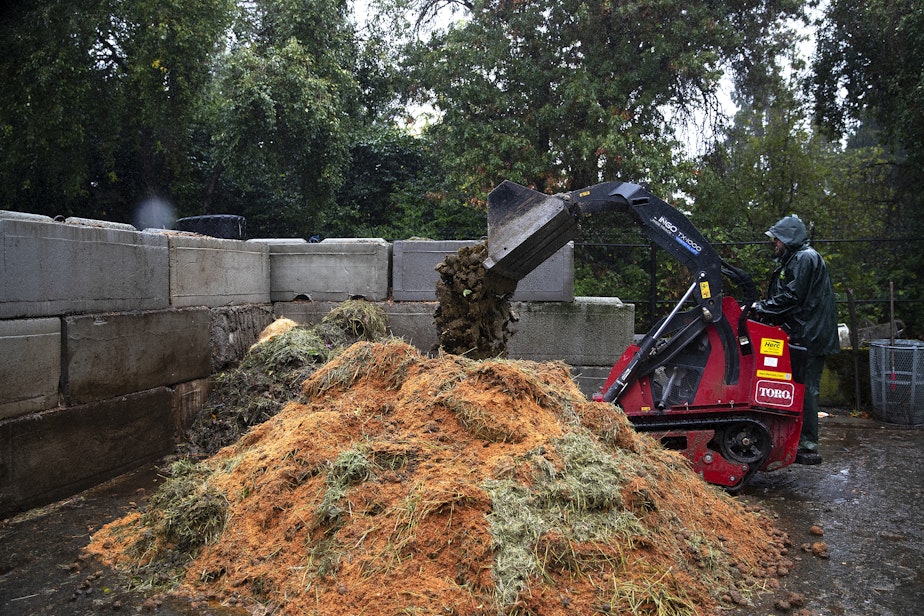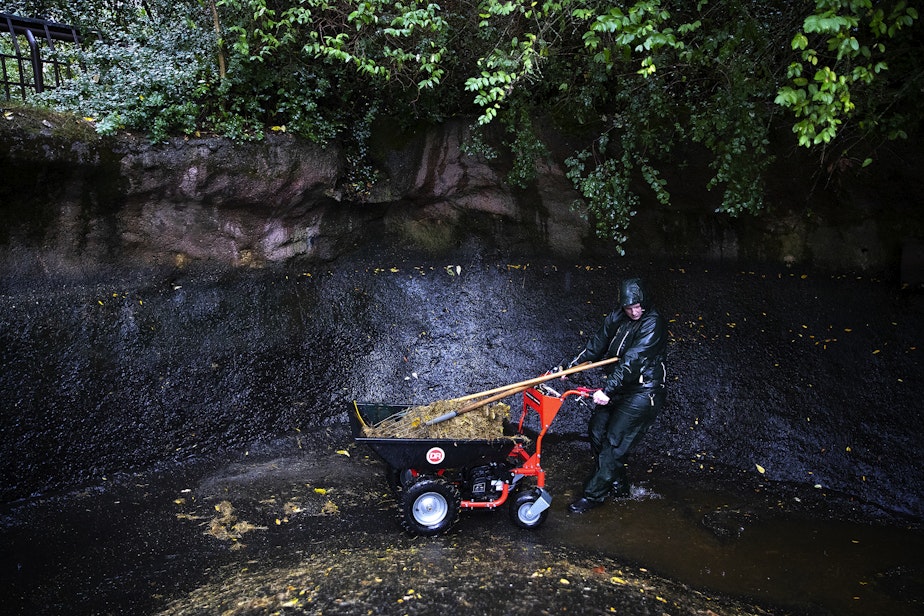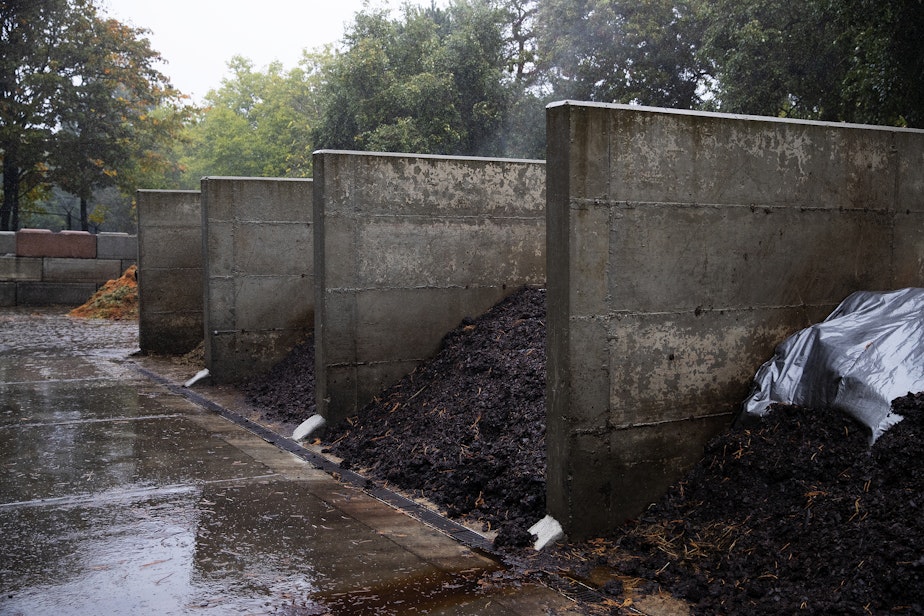Coveted zoo poop makes Seattle gardens bloom. It's the most 'poopular' compost around
About six to eight times a year, Seattle gardeners hustle to Woodland Park Zoo to shovel animal manure into buckets, or into the backs of their pickup trucks.
Five buckets cost $15. A truckload costs about $120.
These “fecal fests,” as they’re called, have gone on for more than 40 years. ("The most poopular compost in the Pacific Northwest," the zoo boasts.)
The zoo doo has always come from savannah creatures, herbivores like zebras, hippos, rhinos, and a giraffe named Dave. Rhinos, the big boys of the bunch, produce 200 to 300 pounds of manure a day.
This spring, the compost mix will include manure from carnivorous animals, like big cats, wolves, and primates, and chickens and flamingos. This will take more testing to ensure safety, but it’s as nutrient rich as the herbivore blend, according to Liv Johansson, a waste management specialist who refers to herself as Dr. Doo.
Sponsored
The new blend won’t smell – at least not at first.
“Tiger fecals are pretty terrible,” said Maddy Rosborough, a zookeeper. “It’s probably one of the most foul odors I’ve smelled, to be honest. Just imagine decaying raw meat.”

This is not fresh manure, to be clear. The manure goes to a quarter-acre yard at the zoo dubbed the “zoo doo yard.” There, it spends four to six months transforming into a scentless black earth teeming with micronutrients. Black gold, some gardeners call it.
The zoo composts animal manure to contribute to the city’s gardeners, but because it’s more sustainable and affordable this way. No need to truck out the compost.
Ciscoe Morris, famed Seattle gardener, said he loves the stuff. He recalled with fondness when the zoo had elephant poop in the mix.
“Elephant boom booms are like the size of basketballs,” Morris said. “They are some of the best compost you can get.
“I got in trouble when I was filling my truck with zoo doo,” he said, “because I kept trying to sneak those great big basketball sized elephant poops into the back of my truck, and they had to give me a lecture. I could only have two or three of them.”
Morris said that when he applies compost to his garden, the worm population explodes in his garden.
“Those worms eat the compost, and they pull it down into the soil,” he said.
Rosborough said the zookeepers collect the manure and bedding themselves rather than rely on others.

“We can use smells to determine if an animal is sick or not,” Rosborough said. Animals of prey, like giraffes, may mask when they aren’t feeling well.
Sponsored
Speaking of giraffes: Martin Ramirez, an animal curator at the zoo, said they produce surprisingly low amounts of poop, considering their height.
Ramirez said giraffes are better at processing their food, which is why their doo comes out the other end as a pellet.
In the giraffe enclosure, Ramirez bent down to pick up at black pellet the size of this thumb, as Dave the giraffe watched.
Ramirez squished it.
“This is how weird I am," he said. Inside the pellet is unprocessed green hay.
Dave the giraffe, unphased, stuck out his long blue tongue.

She said they drain the hippo pool three times a week, rake up the fecal matter, and then cart it over to the zoo doo yard.
There, stainless steel temperature probes take up-to-the-minute readings in the piles to make sure they’re hitting the temperatures needed to comply with regulatory standards.
The zoo turns out 1,000 to 1,200 tons of zoo doo compost a year. That’s equivalent to the weight of 600 cars.
And now it includes carnivorous doo, too.
“Starting this spring, that blend will be available to the public,” said Dr. Doo -- Liv Johansson, the waste management specialist.
Produced for the web by Isolde Raftery.




